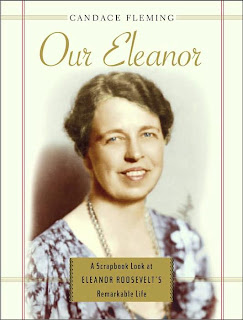Citation:
Schwartz, Alvin. Scary stories to tell in the dark. HarperCollins, 1981. Print.
Summary:
This is a collection of short stories, poems and songs that all focus on the macabre. They are originally legends and folktales collected mainly in the U.S. but from around the world as well. The author's intent is to collect them in one place and pare them down into tales that kids can enjoy and use to scare one another for fun. There are even directions in parentheses within the tales telling the storyteller what to do when to make them scarier.
Personal Impression:
This collection and the one that follows were published in the early '80s. It has been challenged quite often since then. It even made the ALA's Top Ten most challenged list in 2008 and earlier. Reasons: occultism, violence, religious viewpoint, insensitivity, unsuited to age group. It topped the 100 most challenged books between 1990-1999. Why? The drawings are creepy, the writing is truly suited to the age group, and the subject matter is something kids have flirted with from time immemorial though they were told orally. So, obviously the objection is to the stories being written down in a permanent format. Furthermore, the fact that modern parents are STILL challenging the book is ridiculous in my opinion. They let their children watch shows, movies, and cartoons all depicting "occultism" and violence on a regular basis. Not to mention the video games that are popular now make the type of violence in this book look like...well, child's play. The amusing thing is that the book I borrowed from the library had been checked out by kids that obviously thought the same considering the notes that had been made in the margins.
Reviews:
From School Library Journal, January 1, 1982
Gr 3-8 - This folklore collection is unusually good. True to the genre, the stories contained are suitable for telling, particularly at Halloween and around the campfire. Contemporary and humorous stories are blended with spooky ones. The scholarship in the source notes and bibliography will be useful to serious literature students. Although the cover art is not charming, it hints at the peculiarly macabre, shadowy black-and-white illustrations inside. The stories are not unbearably grotesque; they are suitable even for the low elementary grades. -- Leslie Burk Chamberlin, Napa City-County Library, Calif.
Retrieved from UNT Electronic Resourses, Ebsco Academic Search Complete database; http://libproxy.library.unt.edu:2104/ehost/detail?vid=4&hid=112&sid=adf4de62-8a39-4091-be77-a908b3b21a0f%40sessionmgr115&bdata=JnNpdGU9ZWhvc3QtbGl2ZSZzY29wZT1zaXRl#db=a9h&AN=5572422
From World's Strongest Librarian Blog:
"my theory on why Scary Stories is always on somebody’s hit list: it makes these fun, scary folktales seem plausible...The Verdict: If somebody tell me that The Handmaid’s Tale
is going to corrupt our children because it’s irreligious, I get bored quickly. If somebody says The Chocolate War can’t be on our library shelves because it’s full of cruel teenagers and sexuality, I think: “Get a hold of yourself and go splash some water on your face.”
If someone says “Scary Stories  is full of disgusting and scary pictures and stories,” I’m going to agree. But then I’ll say, “Isn’t it great! If there’s a heaven for deviant author/illustrator combos, I hope that I’m allowed to go visit Schwartz and Gemmel” on a field trip.”
is full of disgusting and scary pictures and stories,” I’m going to agree. But then I’ll say, “Isn’t it great! If there’s a heaven for deviant author/illustrator combos, I hope that I’m allowed to go visit Schwartz and Gemmel” on a field trip.”
Be aware of what you can handle and stay within your limits. Your limits are yours. Quit trying to ban books." -- Josh Hanagarne, May 23, 2009
Retrieved from http://worldsstrongestlibrarian.com/1814/book-review-scary-stories-to-tell-in-the-dark-series/
Use in a Library Setting:A Halloween program would benefit from the use of this series; at night, in the dark, with flashlights pointed at their faces while each child takes a turn reading a story or poem. Which would be fun if parents would allow such a thing to take place. Another use could be in a book club that focuses on controversial books or in a display or separate section in the library that focuses on banned and challenged books.



